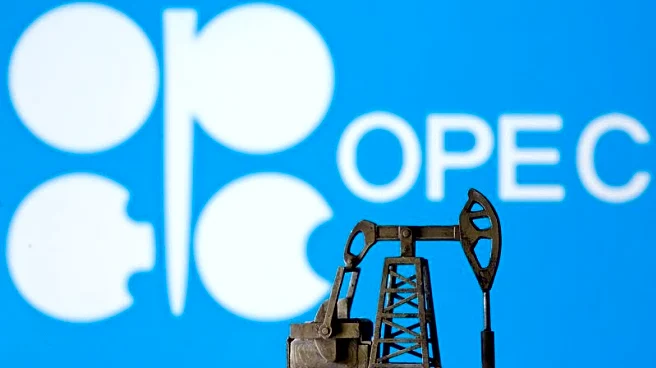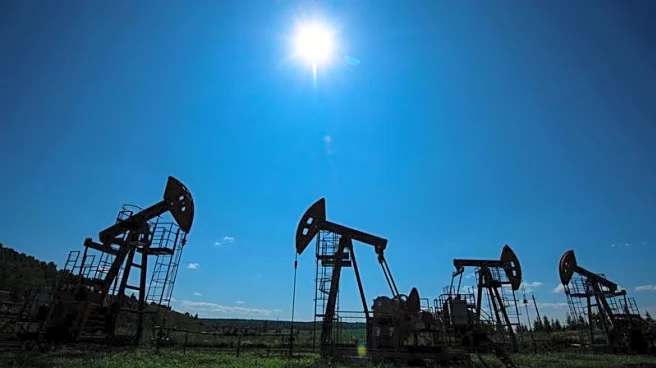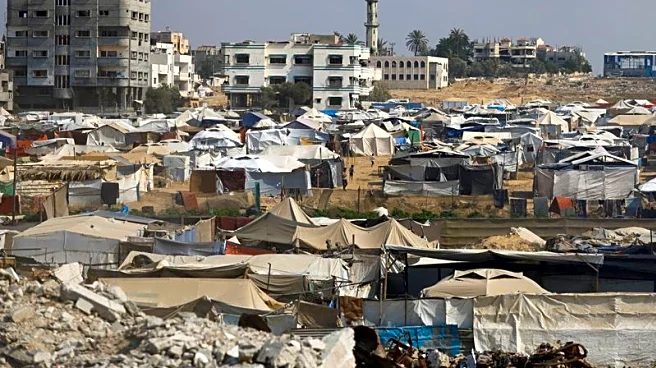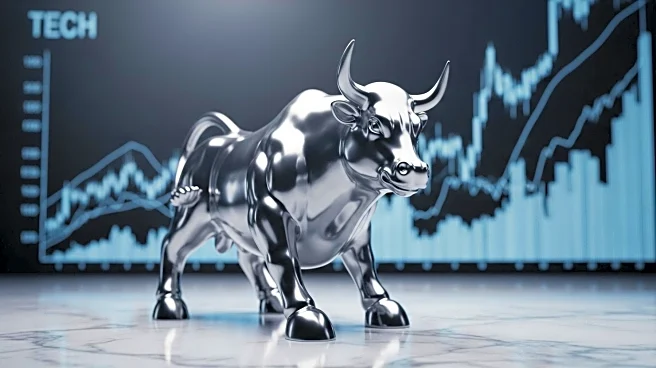What's Happening?
Gulf markets have experienced gains due to expectations of interest rate cuts by the U.S. Federal Reserve. Saudi Arabia's benchmark index TASI rose by 0.2%, driven by increases in Saudi Aramco and Saudi Telecom Company. Dubai's main share index DFMGI also saw a 0.2% rise, with Emaar Properties contributing to the gains. Abu Dhabi's index FADGI increased by 0.4%. However, the Qatari index GNRI fell by 0.4%, impacted by a decline in Qatar Islamic Bank. The Kingdom's Capital Market Authority is considering opening its stock market to non-resident foreign investors, which could further influence market dynamics.
Why It's Important?
The potential interest rate cuts by the U.S. Federal Reserve are significant for Gulf markets, as most currencies in the region are pegged to the dollar. Lower interest rates in the U.S. could lead to increased investment and economic activity in the Gulf, benefiting sectors such as oil and telecommunications. The rise in oil prices, despite concerns about oversupply, also supports the financial markets in the region. The move by Saudi Arabia's Capital Market Authority to open its stock market to foreign investors could attract more international capital, enhancing market liquidity and growth prospects.
What's Next?
If the U.S. Federal Reserve proceeds with interest rate cuts, Gulf markets may continue to experience positive momentum. The public consultation by Saudi Arabia's Capital Market Authority on foreign investment could lead to policy changes that open up new opportunities for international investors. This development may result in increased foreign participation in the region's financial markets, driving further growth and diversification. Stakeholders will be closely monitoring these developments to assess their impact on market dynamics and investment strategies.
Beyond the Headlines
The potential opening of Saudi Arabia's stock market to foreign investors reflects a broader trend of economic liberalization in the Gulf region. This shift could lead to increased transparency and regulatory reforms, fostering a more competitive and dynamic market environment. The long-term implications may include greater integration with global financial markets and enhanced economic resilience. As Gulf countries continue to diversify their economies, these developments could contribute to sustainable growth and stability in the region.












